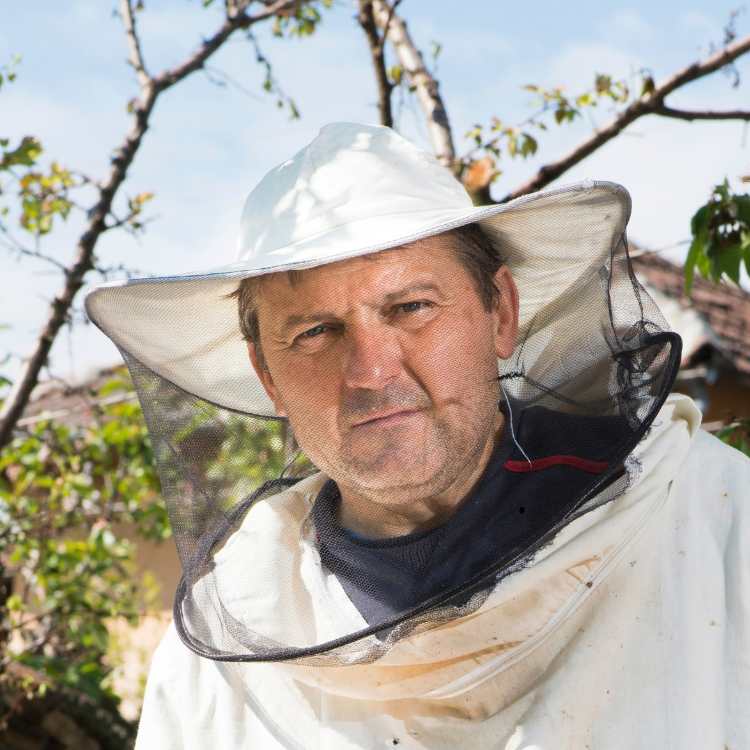Ask any seasoned beekeeper why they got into this work, and most will probably say it started with honey. But anyone who sticks around long enough learns that it is all about the bees. These tiny pollinators have been a part of human life for eons, and their story is tied tightly to ours in ways most folks never stop to think about. The history of beekeeping is not just about the honey. It is one of survival, innovation, and learning to live with one of nature’s most fascinating insects.
From cave walls to the Nile
The earliest traces of humans and bees can be traced back to 15,000 years ago. We are talking Stone Age Spain, where cave paintings show figures scaling cliffs to gather honey from wild hives. Though this was not beekeeping. Just brave or desperate folks risking their lives for something sweet.
The real history of beekeeping begins in ancient Egypt around 2400 BC. Egyptians didn’t just collect honey; they used to manage hives. They built clay cylinders to house bees and even loaded these hives onto boats, floating them up and down the Nile to follow the blooms. These ancient people knew bees better than you would expect for the time. Like modern beekeepers, ancient Egyptians used smoke to calm the bees before collecting the honey, not just as food, but for medicine and burial rituals. Archaeologists have even found 3000 year old jars of honey in tombs that are still preserved and edible.

Prehistoric painting in a cave
Greece, Rome, and the spread across continents
With Egyptian knowledge and influence spreading over the ancient world, so did the practice of honey harvesting. The Greeks got serious about studying bees, with philosophers like Aristotle writing about their behavior and biology. Then came the Romans. They did not just copy the methods of the Egyptians; they refined them for greater efficiency. Plenty of Roman texts talk about hive placement, seasonal management, and even feeding bees during lean months. The history of beekeeping took another leap as Roman influence spread across Europe.
Conquerors, monks, and traders carried bees and the know-how with them. By the time the Middle Ages rolled in, monasteries had thriving apiaries. Beeswax became quite valuable since the Church wanted pure wax candles, not smoky tallow ones. Thus, beekeeping became an economic endeavor.

A landmark from ancient Greece
The cost of honey before modern hives
Before the 18th century, beekeeping had one very big flaw. Harvesting honey usually meant killing the entire hive. Most used skeps, which were dome-shaped baskets made of straw. The only way to get to the honey was to crush the comb. This was pretty wasteful and super rough on the bees. But slowly, things took a turn for the good. In the late 1700s, Thomas Wildman published hive designs. It helped beekeepers understand how to remove sections of the hive without destroying the entire colony. His hanging frames became the first step to a more humane approach, but it wasn’t until 1851 that things really became the modern standard.
American beekeeper Lorenzo Langstroth had a breakthrough when he figured out that bees need about ⅜ of an inch of space to move between combs. This is what we now call “bee space.” This was a massive discovery that allowed the invention of movable frames that bees would not glue together with propolis. His wooden box hive, still is use today, transformed the history of beekeeping forever.

A row of wooden bee hives
From boxes to big businesses
After Langstroth, hive innovation kept rolling in. In France, Charles Dadant found out that bees were much more productive in larger boxes, so his newer deep-frame hives gave the queen more room to lay, which led to stronger colonies and bigger harvests. Dadant’s design is still the backbone of modern commercial beekeeping.
By the time the 20th century rolled in, the history of beekeeping shifted again. This time, the focus was on pollination. People started understanding that bees were more than simple honey producers. In the 1930s, farmers started renting hives to pollinate crops. Today, entire industries rely on migratory beekeeping. Just look at California's almond orchards: every February, over a million hives are trucked in from across the country to pollinate the bloom.

Modern tools, old lessons
These days, beekeeping looks a lot different than it did even a hundred years ago. Flow Hives, invented by Australian beekeepers in 2015, let you tap honey directly from the hive without even opening it. Other tools like Thermal Bee Blankets help keep the honey at the right viscosity without overheating. Tech has really made life easier for beekeepers, but the fundamentals haven’t changed.
You still need to understand your bees. When to feed, how to manage mites, and what to do during the winters. Despite all the gadgets, beekeeping still rewards patience, observation, and respect for the hive.
A living history
Understanding the history of beekeeping gives context to where we are now. It is a stark reminder that honey was once rare and sacred. That people traveled rivers to follow blooms. That entire civilizations valued bees enough to include them in burial rites. It is a legacy that demands care, not convenience.
So, the next time you open a hive, try to see the centuries of trial and error, curiosity and reverence. Beekeeping did not come easy. It came from people watching, learning, and respecting the bees. And that’s still the best way to keep them.The world of beekeeping is fun and full of intrigue. Want to learn more about their magical world? Read our full blog here.





